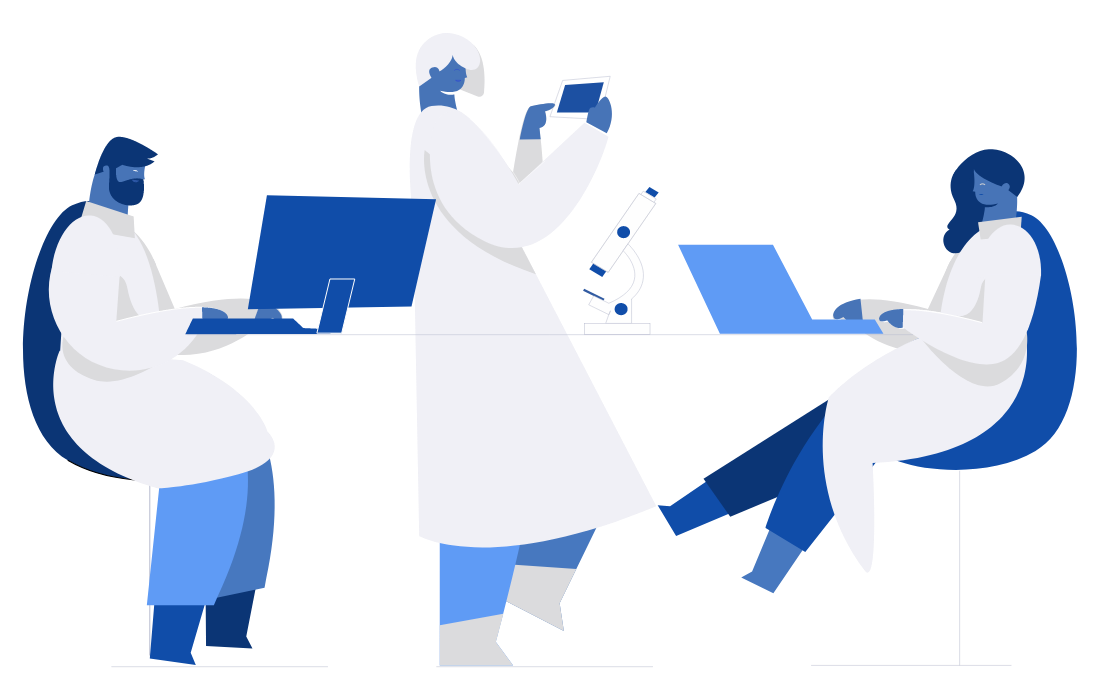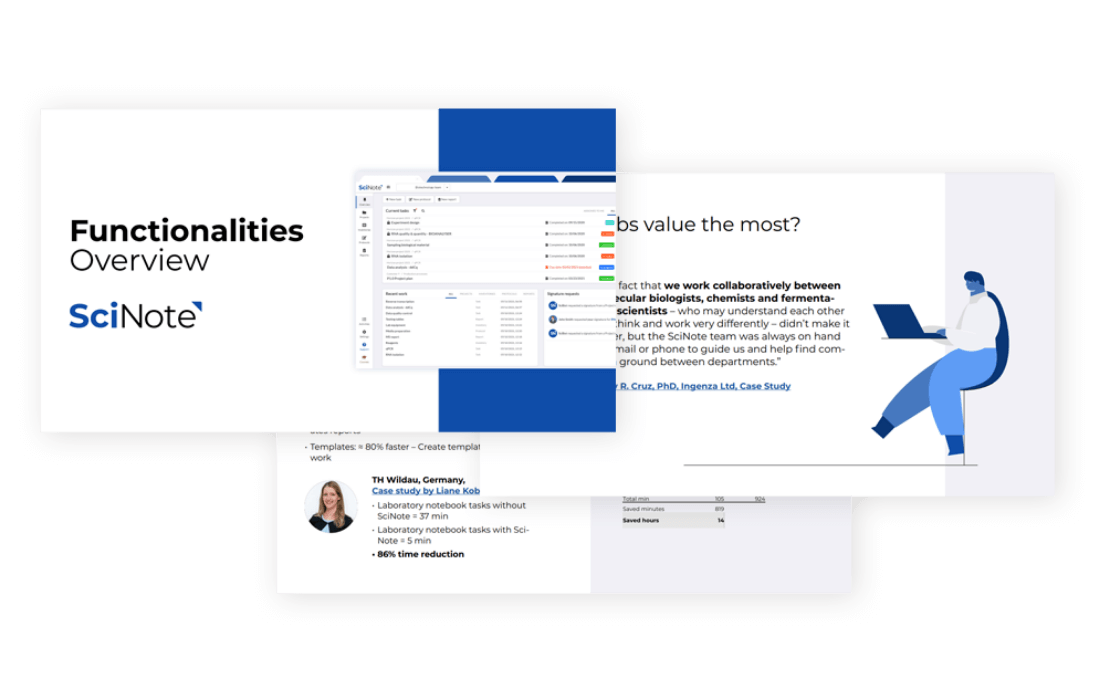Your lab is similar to this scenario:
Your laboratory has at least one department that is focusing on testing, analytics or quality control of products for internal use or you are providing this as a service to private clients. Typically, you are applying validated protocols and analytical methods to batches of samples and generating reports or certificates of analyses. Your analytical methods are typically on the more complex side, sometimes in the form of entire analytical pipelines (e.g. next generation sequencing, screening with complex genetic marker panels, metabolite profiling). Development and optimization of new protocols and methods may also be part of your constant improvement. Other departments in your company could be dedicated more to scientific or industrial research and can still use SciNote. Data confidentiality, access control is important to you, therefore strict measures for data access control are in place. Quality control and traceability also plays a key role in your use of ELN.
Size: Small / medium sized industry lab, CRO (contract-research organization) etc.
Keywords describing the example: CRO, data management, sample analysis, reporting, certificate of analysis, service company, routine laboratory, analytical laboratory, quality control
Suggested SciNote structure:
Team
For you, the team is your department which is dedicated to testing analytics or quality control. People who work on different (or same) projects and collaborate when needed. Other departments in your company such as research groups can co-exist as other Teams in SciNote, using according to their needs.
Project
A project is the name of your customer.
Experiments
Experiment is the analytical pipeline on a batch of samples.
Tasks
Your analytical method. Tasks can also be connected into a workflow to visualize the entire analytical process.
To sum it up, your SciNote structure could be
Team 1: Your lab team
Project(s): Your Customer
Experiment(s): Analytical pipeline on a batch of samples
Task(s): Your analytical method, tasks are connected in a workflow.
Examples of additional functionalities that are helpful:
You can have a dedicated Inventory to record the Samples you are processing for you or your clients. You can store different information related to samples, such as customer ID, date of arrival, due date, any notes, you can also attach reports or certificates of analyses. As Inventories in SciNote are flexible they can be used for different lists (repositories, libraries) e.g., files, equipment, reagents or something completely different. They are completely editable so your columns can contain names, ID codes, barcodes, files, dates and more. You can always add a new batch of samples to the inventory and then assign it to the task within the experiment. This means you will always have the full history of what has been done with each sample, one click away.
Copy as template: When your next sample batch arrives and you decide what is to be done, you can copy the experiment as a template and reuse it, or copy one or all tasks as templates.
Reports: You can generate a report in SciNote for a batch of samples, containing protocols, results, conclusions. It can also serve as a certificate of analysis for internal use or for your customer.
Get an entire overview of SciNote functionalites.
Can’t find what you are looking for?
Schedule a Q&A session with us to discuss the best option for your lab.




